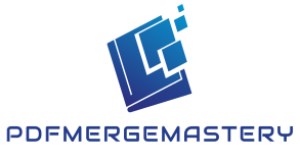In the realm of digital document management, the need to amalgamate multiple PDF files into a single, cohesive document often arises. Whether you’re dealing with a compilation of reports, merging chapters of an e-book, or combining various project documents, the efficiency and simplicity of the process matter. This is where PDF Combine software emerges as an indispensable tool, streamlining the otherwise cumbersome task of merging PDF files.
Background information
In the ever-evolving landscape of digital documentation, Portable Document Format (PDF) has emerged as a standard for sharing and presenting information. Introduced by Adobe in the early 1990s, the PDF format was designed to ensure consistency in document display across various platforms, making it an ideal choice for documents ranging from invoices and reports to e-books and legal agreements.
While the prevalence of PDFs has simplified document sharing, managing multiple PDF files can become a complex task. Businesses, students, and professionals often find themselves dealing with a multitude of PDF documents that need consolidation for streamlined access and distribution. This necessity gave rise to the development of PDF combine software.
PDF combine software is a category of applications tailored to address the challenge of merging multiple PDF files into a unified, coherent document. As technology progressed, so did the capabilities of these tools, offering users more than just a basic merging function. Today’s PDF combine software comes equipped with an array of features that enhance user experience and document management.
The need for efficient PDF merging tools became apparent as collaborative work environments and digital workflows became the norm. With an ever-increasing volume of information being exchanged, the ability to seamlessly combine PDF files has become crucial for productivity and organization.
As we delve into the realm of PDF combine software, it becomes evident that these tools serve as indispensable assets in the digital toolkit of individuals and organizations alike. The subsequent sections will further explore the features, benefits, and step-by-step usage of PDF combine software, shedding light on how these tools have evolved to meet the demands of a dynamic digital landscape.
PDF Combine Software Overview
PDF combine software represents a specialized class of applications designed explicitly for the purpose of merging, organizing, and enhancing PDF files. As the demand for efficient document management solutions grew, developers responded by creating software that goes beyond the basic functionality of combining files. Here’s a detailed overview of key aspects related to PDF combine software:
- User Interface and Accessibility: PDF combine software is known for its user-friendly interfaces, ensuring that users, regardless of their technical expertise, can navigate through the merging process effortlessly. These applications typically feature intuitive drag-and-drop interfaces or straightforward menus, making it easy for users to add, arrange, and merge PDF files seamlessly.
- Merging Capabilities: At its core, PDF combine software excels in merging multiple PDF files into a single, cohesive document. Users can select individual files or entire folders, and the software intelligently combines the selected files while preserving the quality of content, including text, images, and formatting.
- Customization Features: One of the distinguishing features of PDF combine software is its ability to provide users with customization options. Users can rearrange pages within the document, add bookmarks for easy navigation, insert headers and footers for branding or identification, and even set the overall page size to meet specific requirements.
- Compression and Optimization: To address concerns related to file size, many PDF combine tools come equipped with compression and optimization features. These capabilities ensure that the final merged document is not only well-organized but also appropriately sized for efficient storage and sharing.
- Security Measures: Recognizing the importance of data security, some PDF combine software options include features for password protection and encryption. These security measures add an extra layer of protection to sensitive information contained within the merged PDF document.
- Compatibility: PDF combine software is designed to be compatible with various operating systems, including Windows, macOS, and Linux. Additionally, these tools often integrate seamlessly with popular PDF viewers and editors, ensuring a smooth workflow for users accustomed to specific software.
- Integration with Cloud Services: Many modern PDF combine applications offer integration with cloud services, allowing users to access and merge documents directly from cloud storage platforms such as Google Drive, Dropbox, or OneDrive. This feature facilitates collaboration and ensures that users can work with their documents regardless of the device they are using.
As we explore the landscape of PDF combine software, it becomes evident that these tools are not merely utilities for merging files but comprehensive solutions that address the diverse needs of users in the digital era. In the subsequent sections, we will delve into the benefits of using PDF combine software and provide a step-by-step guide on harnessing the full potential of these applications.
Benefits of Using PDF Combine Software
PDF combine software offers a plethora of benefits, transforming the document management experience for individuals and organizations. Here’s a closer look at the advantages:
- Time Efficiency: Manually merging PDF files can be a time-consuming process, especially when dealing with large volumes of documents. PDF combine software streamlines this task, enabling users to merge files in a matter of seconds. The automation of the merging process significantly reduces the time and effort required.
- Preservation of Quality: Maintaining the integrity of the content is paramount when combining PDF files. PDF combine software ensures that the quality of text, images, and formatting is preserved during the merging process. This is crucial, particularly for documents that require a professional and polished appearance.
- Customization Options: PDF combine software empowers users with customization options. From rearranging pages to adding bookmarks and headers, these tools provide a level of flexibility that caters to the specific needs of users. This customization enhances the overall presentation of the merged document.
- Reduced File Size: The merging of multiple PDF files can sometimes result in a larger document size. PDF combine software often includes features to optimize and compress the final document. This not only helps in reducing storage space but also facilitates faster sharing and uploading.
- Enhanced Organization: For users dealing with numerous PDF files, maintaining organization is key. PDF combine software aids in creating a unified document, reducing the clutter associated with managing individual files. This streamlined organization contributes to improved efficiency and accessibility.
Now, let’s complement the information above with a comparative table that highlights key features of popular PDF combine software options:
| PDF Combine Software | User Interface | Customization Options | Compression Features | Security Measures | Integration with Cloud Services |
| Adobe Acrobat | Intuitive | Extensive | Yes | Password protection | Yes (Adobe Document Cloud) |
| PDF-XChange Editor | User-friendly | Moderate | Yes | Encryption | Yes (via third-party cloud services) |
| Smallpdf | Simple | Limited | Yes | Password protection | Yes (Smallpdf’s own cloud service) |
| PDF Merge | Basic | Basic | Yes | No | No |
Step-by-Step Guide on Using PDF Combine Software
Once you’ve chosen the PDF combine software that best suits your needs, the process of merging PDF files becomes a straightforward task. Below is a step-by-step guide to using PDF combine software:
- Begin by downloading and installing the PDF combine software on your computer. Most applications offer versions for Windows, macOS, and sometimes Linux.
- Launch the PDF combine software. The interface typically presents you with clear options for merging PDF files.
- Open the specific function for combining or merging PDF files within the software.
- Select the PDF files you wish to merge. Depending on the software, you can either click to add individual files or choose an entire folder.
- Review and arrange the order of the pages if necessary. Some software allows you to drag and drop pages to achieve the desired sequence.
- Explore customization options provided by the software. This may include adding bookmarks for easier navigation, inserting headers and footers for branding, or adjusting the overall page size.
- Once you’ve configured the settings, initiate the merging process. This is usually done by clicking a “Merge” or equivalent button.
- Choose a destination folder where you want to save the newly merged PDF document.
- Confirm the action, and the software will swiftly merge the selected PDF files into a single document.
- Save the merged document, and you’re done! The entire process is designed to be user-friendly, allowing you to efficiently merge PDF files without the need for advanced technical skills.
Remember to check the final document to ensure that all pages are in the correct order, and the formatting has been preserved as desired. This step-by-step guide provides a general overview, but specifics may vary slightly depending on the PDF combine software you’ve chosen. Always refer to the software’s documentation for any unique features or settings.




